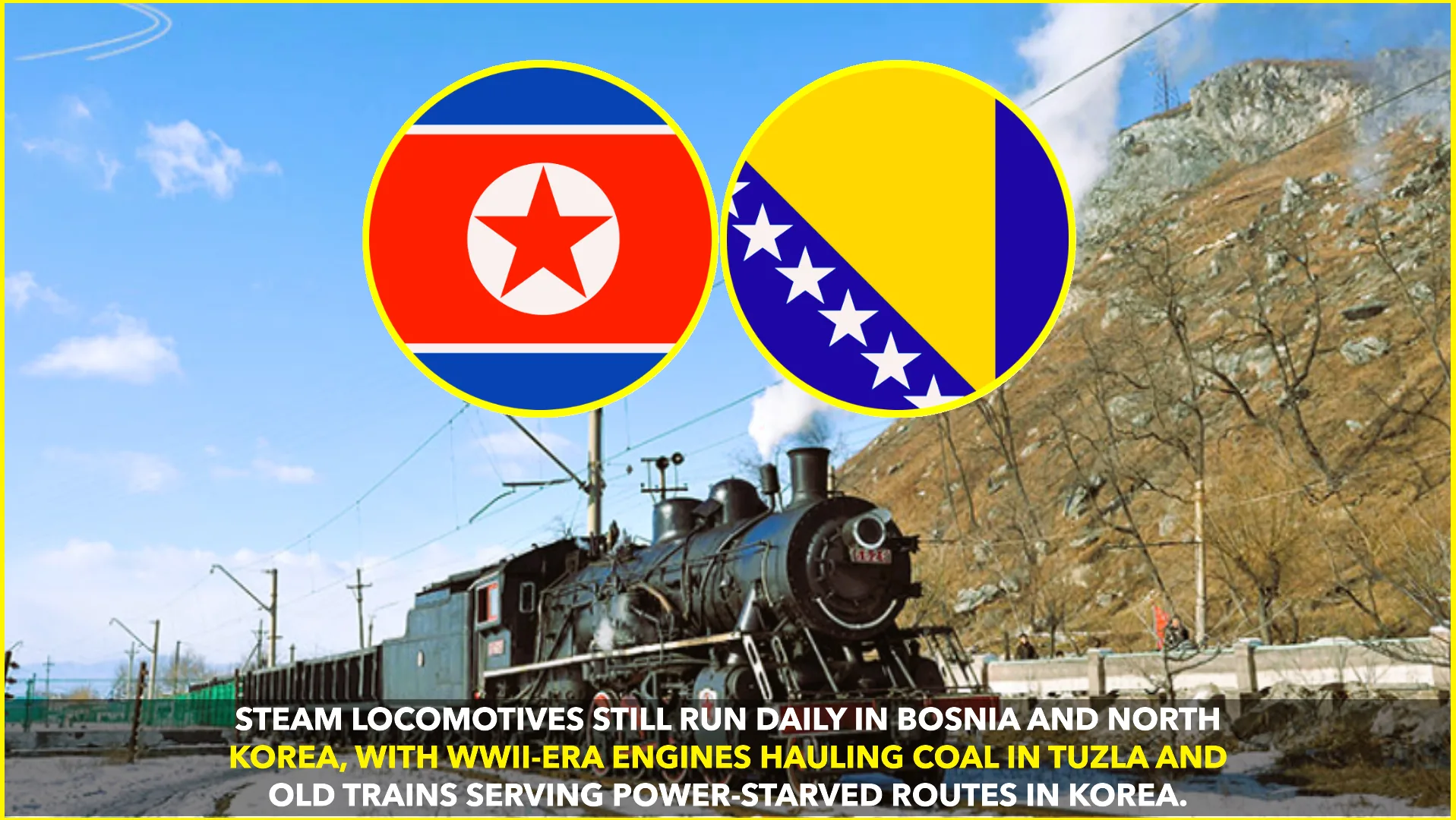Steam locomotives, once the symbol of the Industrial Revolution, have largely disappeared from daily use across the globe. Yet, in 2025, they remain a living part of everyday transport in just two regions: Bosnia and Herzegovina’s Tuzla area and parts of North Korea. These iron giants, some dating back to World War II, continue to serve communities where modernization has either slowed or faced unique challenges.
Bosnia’s “Kriegslok” Engines Keep Rolling
In Bosnia’s northeastern Tuzla region, coal mining still drives much of the local economy. Here, massive black locomotives known as “Kriegsloks” — short for Kriegslokomotive — remain in daily service. Built during World War II by the Germans, these engines were designed for durability, with simplified parts that made them easy to repair in harsh conditions.
Decades later, their rugged design continues to prove valuable. In Tuzla, steam locomotives pull heavy wagons filled with coal from mines to processing plants and distribution points. Unlike in most of Europe, where diesel and electric trains have fully replaced steam, Bosnia’s mining sector has found it cost-effective to keep these locomotives running.
Rail enthusiasts from around the world often visit Tuzla to witness this rare sight. For many, it is like stepping back into a different era — the rhythmic huff of the steam engine, the hiss of pressure valves, and the smoky trails left behind on the tracks. These locomotives are not maintained as museum pieces but as workhorses, relied upon daily to keep the mining industry moving.
Steam’s Survival in North Korea
Thousands of kilometers away, steam locomotives continue to operate in North Korea, but for very different reasons. The country faces chronic shortages of both fuel and electricity, making diesel and electric locomotives difficult to run consistently. Steam engines, though old, offer a practical solution.
Engines such as the NKNR No. 6621 on the Pukchong–Toksong line remain in regular use, transporting both passengers and goods. In many rural areas, these trains are not a novelty but a necessity. For citizens traveling between towns or moving agricultural goods, the reliability of steam locomotives provides a lifeline.
Unlike Bosnia, where steam persists for industrial efficiency, North Korea’s reliance stems from necessity and limited alternatives. Diesel fuel is often prioritized for military or strategic purposes, while the electrical grid suffers frequent outages. Steam engines, fueled by coal or wood, provide an independent system that does not rely on scarce imported fuel or an unstable grid.
A Rare Glimpse into the Past
Globally, steam locomotives survive mostly in museums, heritage railways, and tourist attractions. From the United Kingdom’s preserved Flying Scotsman to India’s fairy queen, these engines are celebrated as cultural treasures. Yet, Bosnia and North Korea stand apart — their steam engines are not relics of the past but functioning elements of the present.
For historians and train enthusiasts, this creates a unique paradox. On one hand, the continued use of steam represents a remarkable continuity of engineering, a bridge between the industrial past and modern needs. On the other hand, it also reflects regions where economic or political realities have slowed the transition to more advanced technologies.
Challenges and Future Outlook
The survival of steam locomotives also raises questions about sustainability. Bosnia’s engines run largely on coal, contributing to carbon emissions in a world moving towards cleaner energy. Similarly, in North Korea, the use of coal or wood reflects a reliance on polluting fuels.
However, both cases highlight resilience and adaptability. Bosnia’s engines extend the usefulness of WWII-era machinery to support local industries. North Korea’s trains demonstrate how older technology can still meet basic needs in difficult conditions.
Whether they will survive another generation remains uncertain. In Bosnia, as mining gradually declines and international pressure mounts for cleaner energy, steam’s role may shrink. In North Korea, modernization efforts, if they expand, could eventually replace steam with more efficient systems.
For now, though, steam locomotives remain an extraordinary reminder that not all engines of history have been sidelined. In the coal mines of Tuzla and along North Korea’s countryside tracks, the sight of steam still defines daily life.
Source: BBC Travel, Smithsonian Magazine, Trains.com archives.










